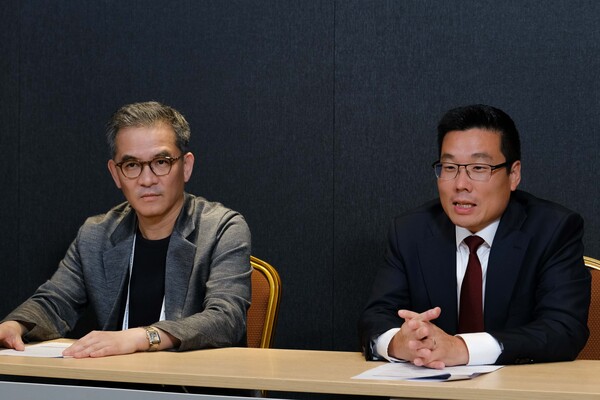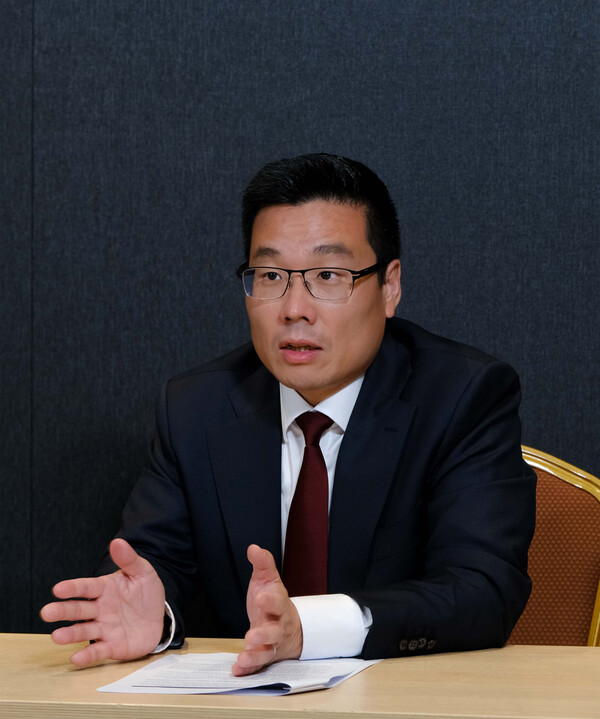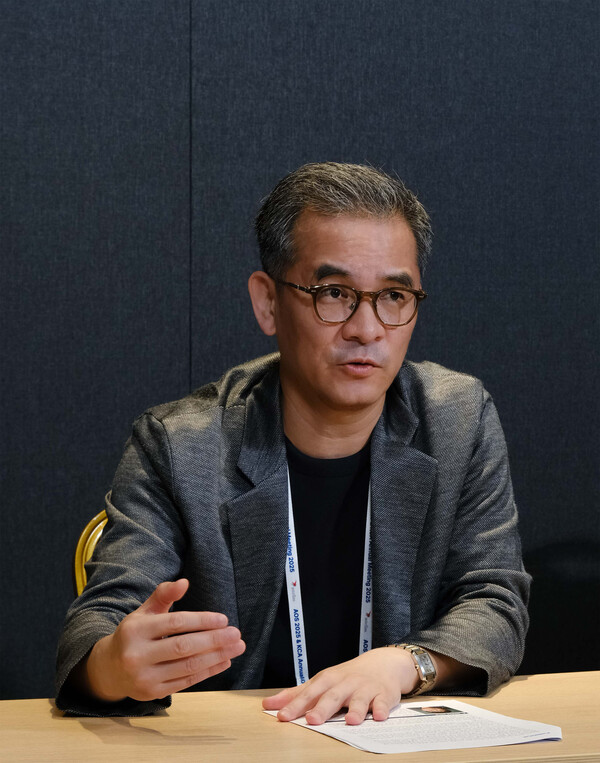The treatment of MET-mutated non-small cell lung cancer (NSCLC) is entering a new era, driven by the approval and reimbursement of Tepmetko (ingredient: tepotinib), a targeted therapy that has redefined clinical expectations for a patient population historically underserved by conventional treatment.
Once a poorly understood molecular subset with no approved therapies, MET exon 14 skipping-positive NSCLC is now emerging as a model case for precision oncology, thanks to years of research, evolving diagnostic tools, and the convergence of clinical and molecular insight.
Unlike other oncogenic drivers such as EGFR or ALK, MET alterations are often present in older patients, many of whom are ineligible for clinical trials due to frailty or comorbidities.
Until recently, this group had few effective treatment options. But with the rise of next-generation sequencing (NGS) and successful validation of MET-targeted agents, the landscape has shifted dramatically.
However, experts emphasize that the current transformation is not solely the result of technological advancement, but the culmination of more than a decade of clinical insight, scientific persistence, and diagnostic evolution.
Tepmetko’s development and integration into clinical practice mark one of the clearest examples of how precision medicine can expand beyond common biomarkers to serve rare molecular subtypes.

In an interview with Korea Biomedical Review, Professor Paul Paik of Memorial Sloan Kettering Cancer Center (MSKCC) and Professor Kim Tae-min of Seoul National University Hospital (SNUH) discussed how Tepmetko is changing treatment algorithms, the diagnostic challenges that remain, and where the field is headed next.
A unique biology with clinical implications
“MET-mutated NSCLC is a distinct subtype with unique demographic and biological features,” said Professor Paik, Clinical Director of the Thoracic Oncology Service at MSKCC. “The median age at diagnosis is about 72, and many patients are in their 80s, often with cardiovascular or pulmonary comorbidities that limit tolerance to chemotherapy or immunotherapy.”
Professor Kim added that this subtype is also frequently associated with brain metastases, further complicating treatment planning.
“High rates of brain involvement and comorbidities mean we need therapies that are both effective and tolerable, especially in the frontline setting,” he said.
Beyond MET exon 14 skipping, MET amplification presents a second layer of complexity.
“In EGFR-mutant patients who relapse after osimertinib, MET amplification emerges as a key resistance mechanism in about 20 percent of cases,” Kim explained. “But defining amplification is tricky as copy number thresholds vary by platform, and testing methodology -- whether NGS, FISH, or PCR—can influence clinical interpretation.”
Tepmetko and the turning point in MET-directed therapy

Professor Paik recalled the early days of MET research at MSKCC. “Around 2013, we identified one of the first MET exon 14 skipping cases at our institution and treated the patient with crizotinib off-label,” he said. “The response was dramatic, and that catalyzed the push toward developing selective MET inhibitors like Tepmetko.”
The pivotal phase 2 VISION trial, in which both experts participated, enrolled 313 patients, including 106 Asians. Overall response rate (ORR) reached 51.4 percent, with median progression-free survival (PFS) of 11.2 months and overall survival (OS) of 19.6 months. In Asian patients, ORR climbed to 56.6 percent, with OS extending to 25.5 months.
Tepmetko also demonstrated meaningful intracranial activity. Among patients with brain metastases at baseline, systemic ORR was 56.1 percent, while intracranial ORR in those with target lesions was 66.7 percent.
Following those early observations, the idea of a dedicated MET inhibitor gained traction.
“We presented our findings in 2015,” he said. “By then, Merck was already developing tepotinib, and the convergence of clinical need and diagnostic capability set the stage for VISION.”
Both experts agreed that the drug’s performance outside clinical trials has validated its approval.
“At MSKCC, outcomes with Tepmetko post-approval have been highly consistent with those observed in VISION,” said Paik. “We’ve seen sustained responses in properly selected patients.”

Professor Kim echoed the observation.
“Although the patient population is small in Korea, the drug’s efficacy and tolerability in practice have closely matched trial data,” he said. “In one case, a patient has remained on Tepmetko–osimertinib for over 26 months with well-managed edema.”
Professor Kim also emphasized the heterogeneity of MET amplification.
“Some patients show high-level amplification without co-occurring mutations like C797S or other EGFR resistance mutations,” he said. “Treatment decisions become more difficult in such cases.”
Despite this, Kim noted that MET-targeted combinations may still be effective.
“In some patients without known resistance mutations, we see durable responses to Tepmetko-based therapy,” he said. “These findings point to the need for more refined stratification tools.”
NGS helps—but is not the whole story
While NGS enabled the identification of MET exon 14 skipping in routine clinical care, both experts emphasized that it is not the solution to all diagnostic gaps.
“NGS is essential, but for acquired resistance -- especially MET amplification -- FISH remains more reliable in our experience,” Kim said.
In Korea, reimbursement for NGS in lung cancer was introduced in early 2023, with patients now paying about half the cost.
“It now allows for upfront molecular profiling, but turnaround time is still an issue -- often three to six weeks depending on the institution,” he said. “Also, reimbursement is restricted to certain platforms, which can delay access to Tepmetko if results come from non-designated systems.”
Paik added that in the U.S., NGS is now the standard of care, with widespread reimbursement allowing community hospitals to adopt testing.
“We often run tissue and liquid biopsies in parallel,” he said. “But when liquid biopsy is negative, we always follow up with tissue testing—we never rule out targetability based on a single result.”
Complexities of MET amplification
Beyond MET exon 14 skipping, MET amplification is a major resistance pathway, especially in EGFR-mutant NSCLC after osimertinib.
“Roughly 20 percent of these patients develop MET amplification,” Kim said. “Definitions vary by platform -- NGS, FISH, or PCR -- and clinical interpretation remains inconsistent.”
Kim stressed that this heterogeneity complicates treatment selection. “Some cases show high-level amplification without secondary EGFR resistance mutations,” he said. “These patients present a gray zone but can still respond to MET inhibition.”
To address this challenge, Kim proposed combining Tepmetko with osimertinib -- a concept that became the INSIGHT 2 trial.
“We repeatedly saw MET amplification driving resistance,” Kim explained. “I suggested a chemo-free, biology-driven approach: pairing a selective MET inhibitor with osimertinib. This evolved into INSIGHT 2.”
The phase 2 study enrolled EGFR-mutant NSCLC patients who developed MET amplification after osimertinib failure, confirmed via FISH. It demonstrated that Tepmetko plus osimertinib could overcome resistance, yielding meaningful control without chemotherapy’s toxicity.
“In our clinical practice, platinum chemotherapy after osimertinib offered PFS of just four to six months,” Kim noted. “INSIGHT 2 showed that targeting MET could extend disease control safely, especially in younger patients.”
Reimbursement expansion needs in Korea
While Korea’s reimbursement model ensures broad patient coverage, Kim noted the need for more flexible policies as precision oncology evolves.
“Tepmetko’s reimbursement in Korea is a major milestone,” Kim said. “But as medicine advances, we’ll need more agile systems, especially for rare oncogenic drivers where trial evidence may be limited but clinical need is urgent.”
Concluding the interview, both experts agreed that Tepmetko’s approval and reimbursement represent a milestone in precision oncology for a historically underserved group of NSCLC patients.
However, sustained progress will depend on better access to diagnostics, deeper understanding of resistance pathways, and novel therapeutics tailored to emerging molecular insights.
“Tepmetko is not the endgame,” Paik concluded. “It’s the first meaningful step in realizing personalized treatment for MET-driven lung cancer -- and a template for what’s possible in other rare subtypes.”
Related articles
- Merck’s Tepmetko wins reimbursement in Korea after 3.5 years, expanding access for lung cancer patients with rare MET mutation
- Merck’s Tepmetko, BeOne Medicines’ Tevimbra to be covered by insurance starting April
- From legacy brands to future breakthroughs: how Merck KGaA is redefining its role in oncology
- Nearly half of Korean lung cancer patients find their disease at stage 4
- Bavencio redefines first-line strategy metastatic bladder cancer: expert
- Merck Healthcare Korea spotlights Pergoveris amid rising infertility, aging demographics
- Merck Healthcare Korea marks oncology milestone as full portfolio gains reimbursement

